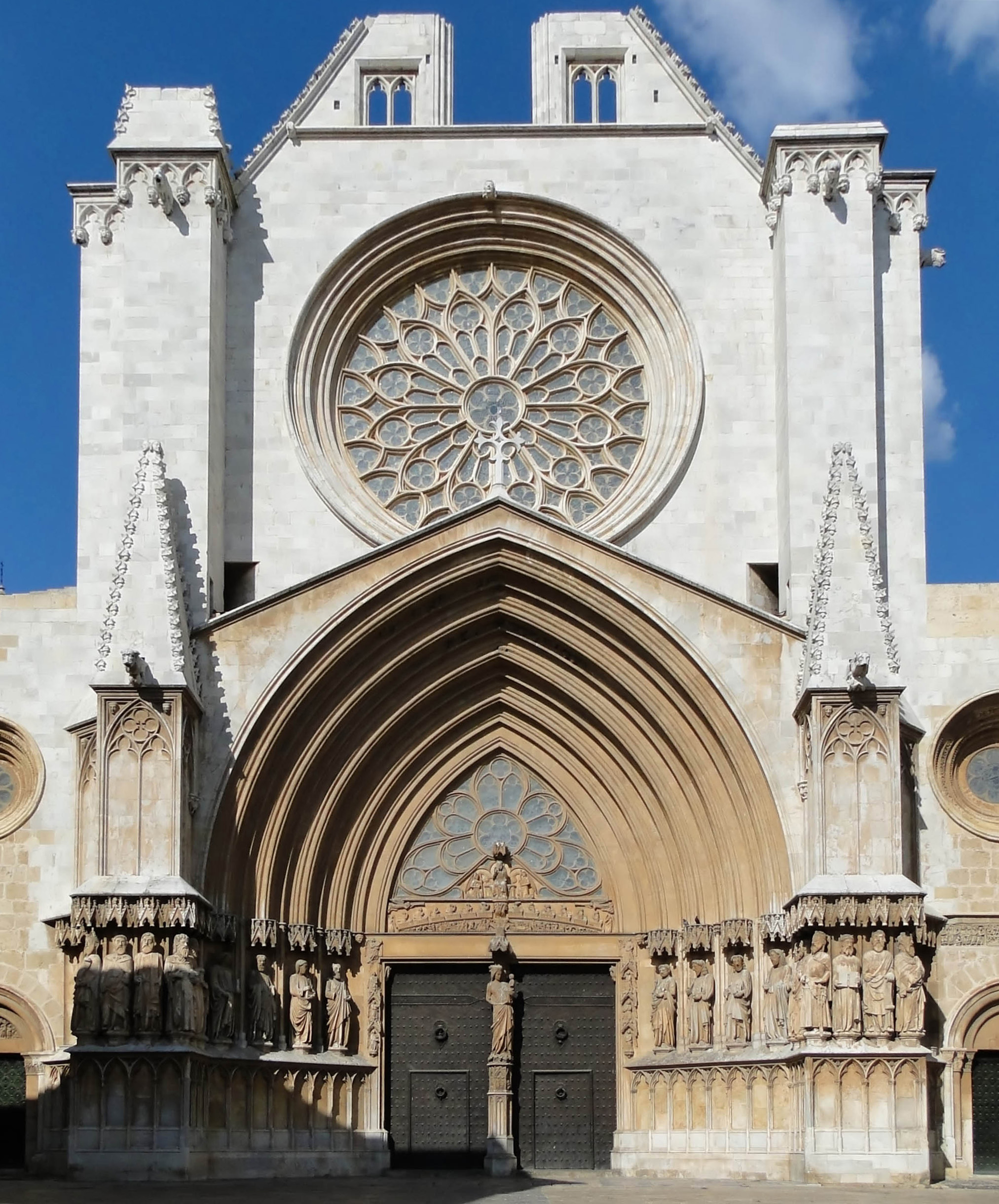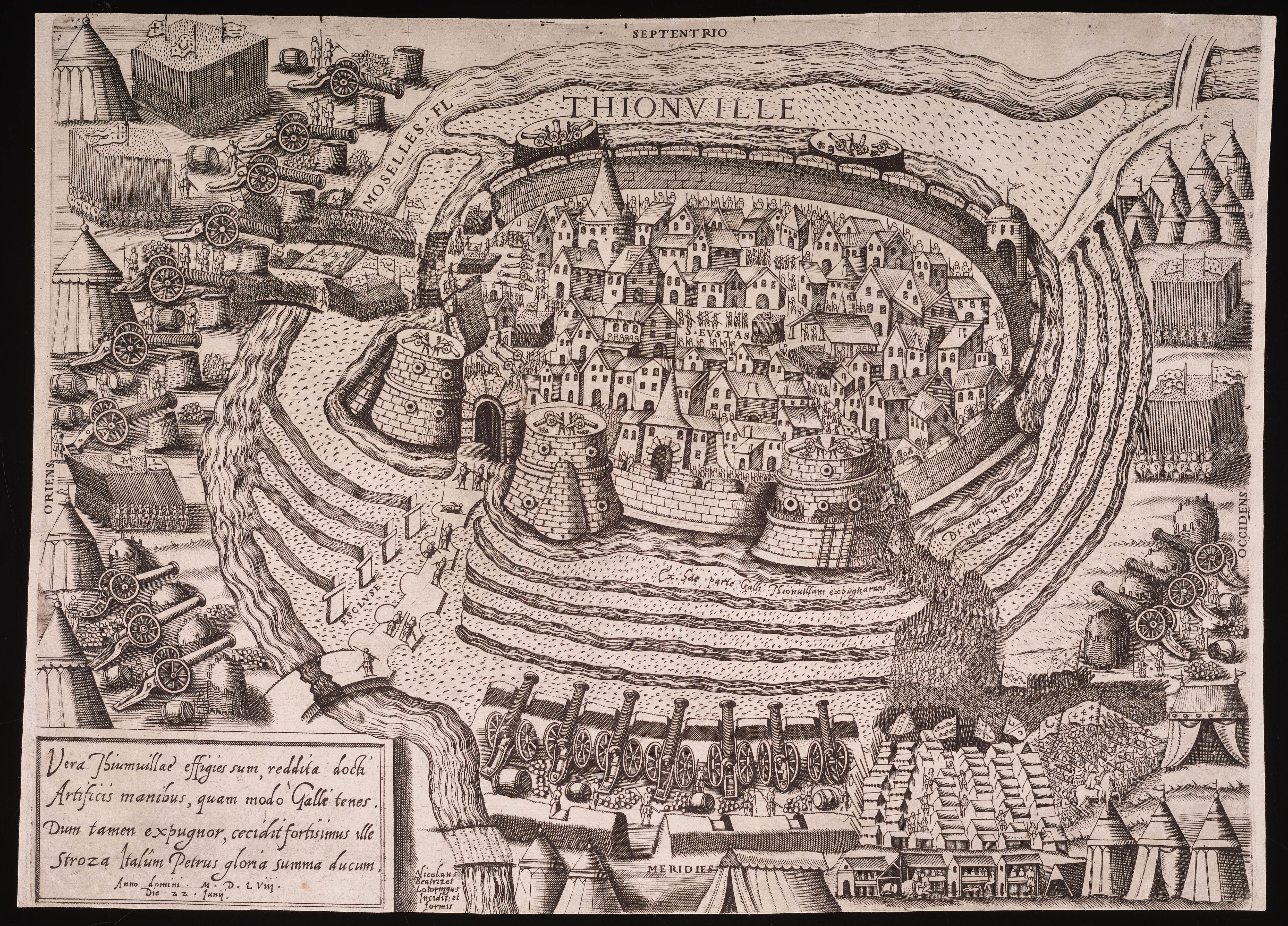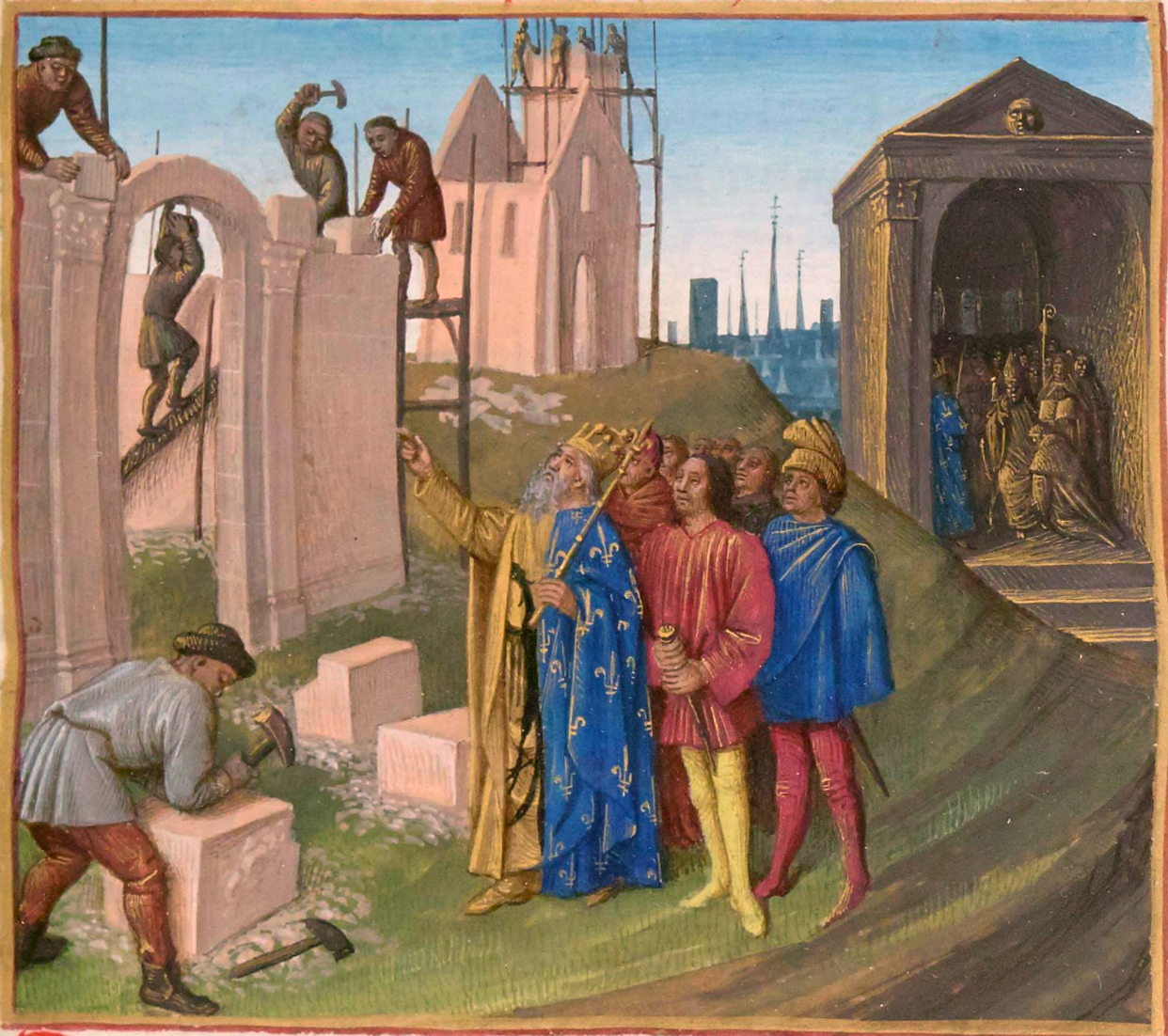|
Siege Of Tortosa (808–809)
The siege of Tortosa was a military campaign by King Louis the Pious of Aquitaine in 808–809. It was part of a decade of intense activity by Louis against the Umayyad Emirate of Córdoba in the region of the lower Ebro. The chronology of his campaigns, which must be worked out from both Latin and Arabic sources, is subject to different interpretations. The siege was begun in 808 by Ingobert, Louis arriving the following year with a larger army and siege train. The earliest reference to trebuchets in western Europe is made in connection with this siege. Louis failed to take Tortosa or force its surrender, but he may have received a formal submission before retiring to his own kingdom. The Arabic sources present him as defeated by a relieving force, while at least one Latin source suggests that the walls were in fact breached. Background and first siege The siege of Tortosa was part of a decade of intense activity by Louis against the Umayyads in the region of Catalonia. Followi ... [...More Info...] [...Related Items...] OR: [Wikipedia] [Google] [Baidu] |
Reconquista
The ''Reconquista'' (Spanish language, Spanish and Portuguese language, Portuguese for ) or the fall of al-Andalus was a series of military and cultural campaigns that European Christian Reconquista#Northern Christian realms, kingdoms waged against the al-Andalus, Muslim kingdoms following the Muslim conquest of the Iberian Peninsula by the Umayyad Caliphate, culminating in the reign of the Catholic Monarchs of Spain. The beginning of the ''Reconquista'' is traditionally dated to the Battle of Covadonga ( or 722), in which an Kingdom of Asturias, Asturian army achieved the first Christian victory over the forces of the Umayyad Caliphate since the beginning of the military invasion. The ''Reconquista'' ended in 1492 with the Granada War#Last stand at Granada, fall of the Nasrid kingdom of Granada to the Catholic Monarchs of Spain, Catholic Monarchs. In the late 10th century, the Umayyad vizier Almanzor waged a series of military campaigns for 30 years in order to subjugate ... [...More Info...] [...Related Items...] OR: [Wikipedia] [Google] [Baidu] |
Al-Maqqarī
Aḥmad ibn Muḥammad al-Maqqarī al-Tilmisānī (or al-Maḳḳarī) (), (1577-1632) was an Algerian scholar, biographer and historian who is best known for his , a compendium of the history of Al-Andalus which provided a basis for the scholarly research on the subject until the twentieth century. Life A native of Tlemcen and from a prominent intellectual family originally from the village of Maqqara, near M'sila in Algeria. After his early education in Tlemcen, al-Maqqari travelled to Fes in Morocco and then to Marrakesh, following the court of Ahmad al-Mansur. On al-Mansur's death in 1603, al-Maqqari established himself in Fes, where he was the imam of the Qarawiyyin Mosque. In 1617, he left for the East, possibly following a quarrel with the local ruler, and took up residence in Cairo, where he composed his best known work, ''Nafḥ al-ṭīb''. In 1620, he visited Jerusalem and Damascus, and made five pilgrimages over six years. At Mecca and Medina he gave popular lec ... [...More Info...] [...Related Items...] OR: [Wikipedia] [Google] [Baidu] |
Vassus
A vassal or liege subject is a person regarded as having a mutual obligation to a lord or monarch, in the context of the feudal system in medieval Europe. While the subordinate party is called a vassal, the dominant party is called a suzerain. The rights and obligations of a vassal are called vassalage, while the rights and obligations of a suzerain are called suzerainty. The obligations of a vassal often included military support by knights in exchange for certain privileges, usually including land held as a tenant or fief. The term is also applied to similar arrangements in other feudal societies. In contrast, fealty (''fidelitas'') was sworn, unconditional loyalty to a monarch. European vassalage In fully developed vassalage, the lord and the vassal would take part in a commendation ceremony composed of two parts, the homage and the fealty, including the use of Christian sacraments to show its sacred importance. According to Eginhard's brief description, the ''commenda ... [...More Info...] [...Related Items...] OR: [Wikipedia] [Google] [Baidu] |
Charlemagne
Charlemagne ( ; 2 April 748 – 28 January 814) was List of Frankish kings, King of the Franks from 768, List of kings of the Lombards, King of the Lombards from 774, and Holy Roman Emperor, Emperor of what is now known as the Carolingian Empire from 800, holding these titles until his death in 814. He united most of Western Europe, Western and Central Europe, and was the first recognised emperor to rule from the west after the fall of the Western Roman Empire approximately three centuries earlier. Charlemagne's reign was marked by political and social changes that had lasting influence on Europe throughout the Middle Ages. A member of the Frankish Carolingian dynasty, Charlemagne was the eldest son of Pepin the Short and Bertrada of Laon. With his brother, Carloman I, he became king of the Franks in 768 following Pepin's death and became the sole ruler three years later. Charlemagne continued his father's policy of protecting the papacy and became its chief defender, remo ... [...More Info...] [...Related Items...] OR: [Wikipedia] [Google] [Baidu] |
Roderic
Roderic (also spelled Ruderic, Roderik, Roderich, or Roderick; Spanish language, Spanish and , ; died 711) was the Visigoths, Visigothic king in Hispania between 710 and 711. He is well known as "the last king of the Goths". He is actually an extremely obscure figure about whom little can be said with certainty. He was the last Goth to rule from Toledo, Spain, Toledo, but not the last Gothic king, a distinction which belongs to Ardo. Roderic's election as king was disputed and he ruled only a part of Hispania with an opponent, Achila II, Achila, ruling the rest. He faced a rebellion of the Basques and the Umayyad conquest of Hispania, Umayyad invasion. He was defeated and killed at the Battle of Guadalete. His widow Egilona is believed to have married Abd al-Aziz ibn Musa, the first Muslim governor of Hispania. Early life According to the late ''Chronicle of Alfonso III'', Roderic was a son of Theodefred, himself a son of king Chindaswinth, and of a woman named Riccilo. Roderic' ... [...More Info...] [...Related Items...] OR: [Wikipedia] [Google] [Baidu] |
Tarragona
Tarragona (, ; ) is a coastal city and municipality in Catalonia (Spain). It is the capital and largest town of Tarragonès county, the Camp de Tarragona region and the province of Tarragona. Geographically, it is located on the Costa Daurada area on the Mediterranean Sea, Mediterranean shore. During the period of the Roman Empire, it was one of the most prominent cities of the Iberian Peninsula, as the capital, successively, of the Roman provinces of Hispania Citerior and Hispania Tarraconensis. The Archaeological Ensemble of Tárraco, Archaeological Complex of Tàrraco is a UNESCO World Heritage Site. History Punic Etymology Ta-Aragona name in Phoenician means the Aragona, which is the native Iberian term for the Ebro Vallay. Mythical Origins One Catalan legend holds that Tarragona was named for ''Tarraho'', eldest son of Tubal in c. 2407 BC; another (derived from Strabo and Megasthenes) attributes the name to 'Taharqa, Tearcon the Ethiopian', a seventh-century BC pharaoh w ... [...More Info...] [...Related Items...] OR: [Wikipedia] [Google] [Baidu] |
Cinca (Spain)
The Cinca (; ; , ) is a river in Aragon, Spain. Its source is in the Circo de Pineta, in the Ordesa y Monte Perdido National Park, in the Aragonese Pyrenees. It is a tributary to the Segre River, with its confluence at La Granja d'Escarp, not far from the point where the Segre flows into the Ebro River. The Cinca River flows through a rich agricultural region. Path and tributaries The Cinca is born in the area of Pineta and begins its descent between cascades and torrents, in the mountains of the Tres Sorores. It flows across the entire Pineta valley. In Bielsa, it joins with the Barrosa, and somewhat later the Cinqueta. Upon reaching Aínsa, it is joined on the right side by the Ara River, where the Mediano Reservoir is located. Immediately after the Mediano, after crossing the throat of the Entremón, it is again dammed at the El Grado Reservoir near El Grado. Just after this, it is joined on the left side by the Ésera River, the Cinca's most important tributary ... [...More Info...] [...Related Items...] OR: [Wikipedia] [Google] [Baidu] |
Borrell, Count Of Osona
Borrell I was the first count of Cerdanya, Urgell, and Osona from between 797 and 799 to his death in 820.Ramon d'Abadal i de Vinyals (1986). ''El domini carolingi a Catalunya''. . He was a Visigoth nobleman, probably from ''Cerretana'' (Cerdanya). In the final years of the eighth century, the Franks under Charlemagne and his son Louis the Pious, king of Aquitaine, were subduing the ''Marca Hispanica'' and expanding southwards into Moorish territory. When Urgell and Cerdanya were subdued around 798, Borrel was appointed count. He took a very active part in the subsequent conquest of Osona in 799 and the successful siege of Barcelona in 801. He may have been named count in Osona as a reward for his services. In 804 and 805, he participated in the expeditions to Tortosa, but not in the subsequent campaigns of 807, 808, and 809. He died in 820 and Osona was given to Rampon, Count of Barcelona. Urgell and Cerdanya were granted to Aznar Galíndez I Aznar Galíndez I (also '' Asnar ... [...More Info...] [...Related Items...] OR: [Wikipedia] [Google] [Baidu] |
Bera, Count Of Barcelona
Bera () (died 844) was the first count of Barcelona from 801 until his deposition in 820. He was also the count of Razès and Conflent from 790, and the count of Girona and Besalú from 812 (or 813 or 817) until his deposition. In 811, he was witness to the last will and testament of Charlemagne. Origins Bera's origins are mostly unknown, although it seems certain that he was a Visigoth. He may have been one of the sons of William of Gellone, Count of Toulouse and cousin of Charlemagne, although this is not supported by William's detailed will from 804. In 790, Bera was given the governorship of the counties of Razès and Conflent, possibly by William. The Counties of Roussillon (with the ''pagus'' of Vallespir) and Empúries were given to William's son Gaucelm, whose mother was Gunegunde (Cunegonde), one of William's two wives. Background and installation In 796, Sa'dun al Ruayni, the Wali of Barcelona, attempted to break his allegiance to Al-Hakam I, emir of Córdoba. In ... [...More Info...] [...Related Items...] OR: [Wikipedia] [Google] [Baidu] |
Isembard (vassal Of Charlemagne)
Isembard (also spelled Isembart or Isembert) was a vassal (''vassus'') of Charlemagne. According to the ''Vita Hludovici'', in 805 he took part in Louis the Pious's campaign against the Emirate of Córdoba. He, along with Adhemar, Bera and Burrellus, was one of the leaders of the raiding party that crossed the Ebro river, sacked the Muslim base at Villa Rubea and defeated an army in pitched battle. After twenty days' raiding, they rejoined the main army besieging Tortosa. Isembard may have been leading his own men on this campaign.Bernard S. Bachrach Bernard Stanley Bachrach (May 14, 1939 – July 14, 2023) was an American historian. He taught history at the University of Minnesota from 1967 until his retirement in 2020. He specialized in the Early Middle Ages, mainly on the topics of medieva ..., "Military Organization in Aquitaine under the Early Carolingians", ''Speculum'' 49, 1 (1974): 27. Notes People of the Reconquista {{France-mil-bio-stub ... [...More Info...] [...Related Items...] OR: [Wikipedia] [Google] [Baidu] |
Thionville
Thionville (; ; ) is a city in the northeastern French Departments of France, department of Moselle (department), Moselle. The city is located on the left bank of the river Moselle (river), Moselle, opposite its suburb Yutz. History Thionville was settled as early as the time of the Merovingian dynasty, Merovingians. After the fall of the Western Roman Empire, the region was inhabited by the Germanic Alamanni. It was known in the Medieval Latin, Latin of that era as ''Theudonevilla'' or ''Totonisvilla''. King Pepin the Short had a Kaiserpfalz, royal palace constructed here. The Synod of Thionville was held here beginning on 2 February 835. It reinstated Emperor Louis the Pious and reversed his former conviction on crimes — none of which he actually committed — and deposed the Archbishop of Rheims, Ebbo. The Synod was composed of 43 bishops. On 28 February 835, in Mainz, Ebbo admitted that Louis had not committed the crimes of which he had been indicted and for w ... [...More Info...] [...Related Items...] OR: [Wikipedia] [Google] [Baidu] |
Aachen
Aachen is the List of cities in North Rhine-Westphalia by population, 13th-largest city in North Rhine-Westphalia and the List of cities in Germany by population, 27th-largest city of Germany, with around 261,000 inhabitants. Aachen is located at the northern foothills of the High Fens and the Eifel Mountains. It sits on the Wurm (Rur), Wurm River, a tributary of the Rur (river), Rur, and together with Mönchengladbach, it is the only larger German city in the drainage basin of the Meuse. It is the westernmost larger city in Germany, lying approximately west of Cologne and Bonn, directly bordering Belgium in the southwest, and the Netherlands in the northwest. The city lies in the Meuse–Rhine Euroregion and is the seat of the Aachen (district), district of Aachen ''(Städteregion Aachen)''. The once Celts, Celtic settlement was equipped with several in the course of colonization by Roman people, Roman pioneers settling at the warm Aachen thermal springs around the 1st cen ... [...More Info...] [...Related Items...] OR: [Wikipedia] [Google] [Baidu] |





